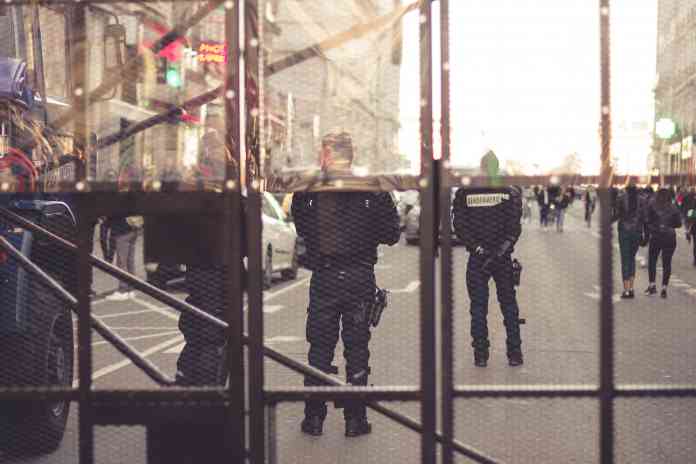
CTB Interview: Protecting public spaces against terrorist attacks
Counter Terror Business (CTB) talks to Lina Kolesnikova (LK), a member of the PACTESUR Expert Advisory Committee, about the influence of Martyn’s Law on the continent and how to better tackle terrorist attacks using vehicles
CTB: You have said that Martyn’s Law can provide some best practices on how to create a security-minded culture. What influence do you think the proposed legislation will have for the European event planning sector?
LK: EU institutions and European security professionals follow the discussion on Martyn’s Law with a great interest. That is the reason why I was asked to write about it for European Forum for Urban Security (EFUS) partners last January. I am sure European countries will continue to follow the developments in security of public spaces in the UK.
As you know EU Member States have varying approaches to and experience in the protection of public spaces. EU supports Member States by providing them for the exchange on relevant expertise and best practices. EU cooperation on the protection of public spaces adds value through development of common guidance, testing of equipment, encouraging harmonisation of standards and exchanging good practices.
I am sure British partners will continue to participate in this exchange and we will be updated on their experience, upon certain time after approval of Martyn’s Law. However, even now, I think Martyn’s Law provides EU Member States with interesting structured approach and suggested practices, such as how to create a security-minded culture and which steps to take to make physical security improvements.
CTB: How can we find a better balance between stricter security protocols and the preservation of the open nature of public places?
LK: I think we should look for a holistic approach here, where urban planners and designers are highly involved together with the public places management (e.g., concerned authorities, tourism sector management, religious and/or cultural facilities etc.), representatives of the events organising industry and other actors who are either involved in public place operations or supply solutions and technologies used in that context. Working together towards making stricter security less visible and intrusive is the approach most likely to reconcile the needs and views of security versus usability and comfort at public places.
CTB: The most significant feature that defined which places should be included in the Protect Duty legislation appears to be capacity. Are there other factors/criteria that you think should be prioritised?
LK: Worth noting that capacity, as well as some other parameters, are effectively a translation of the risk assessment methodology. In fact, capacity is one of the parameters which influences the possible impact of a risk happening. Therefore, I would suggest splitting definitions related to the risk-based approach largely focusing on assessment of possible impact(s) and making budgetary and regulatory decisions in function of such assessment impacts; from possible terms in which the formal requirements and criteria can be expressed in the forthcoming legislation. We should base ourselves on a series of risk related parameters, where capacity of PAL is just one criterion reflecting on risk related parameters.
For example, some people indicate 100 or 303 persons as a threshold for capacity. I would argue that other criteria can be possible, such as social impact (even though, it is not so easy to measure it), presence of children or other groups of population who might be less predictable and manageable in their reactions.
CTB: Martyn’s Law proposes a proportionate approach. What will this likely look like in practice?
LK: I would think that the approach can be defined as a sort of matrix, where there are several qualifying criteria with multiple values. Some sort of combination of these criteria and values could lead to a named (or numbered) profile. Each profile, in turn, is linked to the associated set of requirements, mandatory and recommended controls, as well as the way how subjects (to Martyn’s Law) can assess and report on their compliance.
CTB: Attacks using vehicles have become a challenge for security professionals around the globe in recent years. What difficulties exist for protecting dynamic events and routes to and from a location from such attacks?
LK: Attacks using vehicles have become a challenge for security professionals around the globe and a real challenge is the difficulty in preventing them. Larger cities attempt to secure open public spaces using artificial, physical obstacles. However, it is much more difficult to put barriers in place when talking about dynamic events with moving people, such as parades and marathons, or regular streets used by participants at a large event getting to and from a venue, for example at stadium concerts.
Elements of ‘4G’ (guards-guns-gates-guidance) may come into play here, such as guards and guidance. Police and private security personnel should pay more attention to larger vehicles, especially those that park in and around the same area for several days in a row. Other important measures include increasing scrutiny of the vehicle rent services (in respect to screening those who take cards), and especially those renting large vehicles like SUVs, large vans or trucks. Attention must be paid to the theft of large and heavy vehicles, and notice made of any larger events which might be happening in the area. One of the key parameters in the newly defined approach to the PAL/event security is guidance in its broad sense, including guidance to evacuation, guidance to shelter, guidance to ways people should react, etc.
The main difficulty in realising the approach, even parametrised based on the previously discussed criteria, is for each actor to find necessary budgets, time and resources to get necessary controls available in real life. For example, a city might have sufficient resources to secure perimeter for one event or one important PAL. However, it could be expected that none of cities would have resources sufficient to deliver the same controls at 10-20 PALs with mass events simultaneously. This brings us to a very specific consideration going beyond the topic of Martyn’s Law, namely, how to manage accessibility, events and security with associated controls for multiple PALs at the same time. And that number for a large city can be really significant. Each PAL and event will draw on typically limited resources available within the area, while having all resources for all controls on their own budget continuously would not be feasible for most.
CTB: PACTESUR was born from the escalation of threats and terrorist events across Europe, seeking to better understand how cities and local police forces can better protect their vulnerable public spaces. Can you detail what the main project activities are?
LK: In 2018, The European Committee of the Regions (CoR) welcomed the recognition of the role of mayors in the European Action Plan to help local elected representatives to protect public spaces against terrorist attacks. The CoR - the assembly of elected local and regional representatives of the European Union – made a call on the European Commission to ensure the continuity of the new fund for supporting transnational projects protecting public spaces. It called on the Member States, regions and cities to incorporate the protection of public spaces into the infrastructure investment carried out under the European Regional Development Fund and the Cohesion Fund.
PACTESUR is based on four pillars:
• in-depth reflection on standards, legal frames and local governance;
• the development of specialised training for local security operators;
• awareness-raising of citizens and politicians on their role on prevention and as security actors;
• the identification of the most adapted local investments for securing open and touristic public spaces by sharing field experience.
PACTESUR will draw conclusions from lessons learnt and create training materials for security forces, information tools for citizens and guidelines for local authorities to build up knowledge on how to design better policies to secure public spaces.
Activities within the project include: reflection on standards, legal frameworks and local governance for the elaboration of common standard guidelines, response protocols and soft laws; development of specialised training programmes for local security operators; awareness-raising of citizens and politicians on their role on prevention and as security actors; identification of the most adapted local investments for securing open and touristic public spaces by sharing field experience; setting up local pilot sites equipped to prevent and promptly react to terrorist threats while preserving the urban environment; and conducting of three European Week of Security (Nice 2019, Torino 2020 and Liege 2022).
The European Forum for Urban Security (EFUS) is active in other projects as well (PRoTECT, for example) which looks at the developing of new tools and solutions to help local authorities and other local actors to better prevent, respond and react to terrorist threats in public spaces.
Lina Kolesnikova is a consultant in international relations, security, risk and crisis management in Brussels, Belgium, and a member of Crisis Response Journal’s (CRJ) Advisory Panel. She is also a fellow of the Institute of Civil Protection and Emergency Management (ICPEM) and a representative of ICPEM in Europe. Since 2019, she is a member of the PACTESUR Expert Advisory Committee.
















